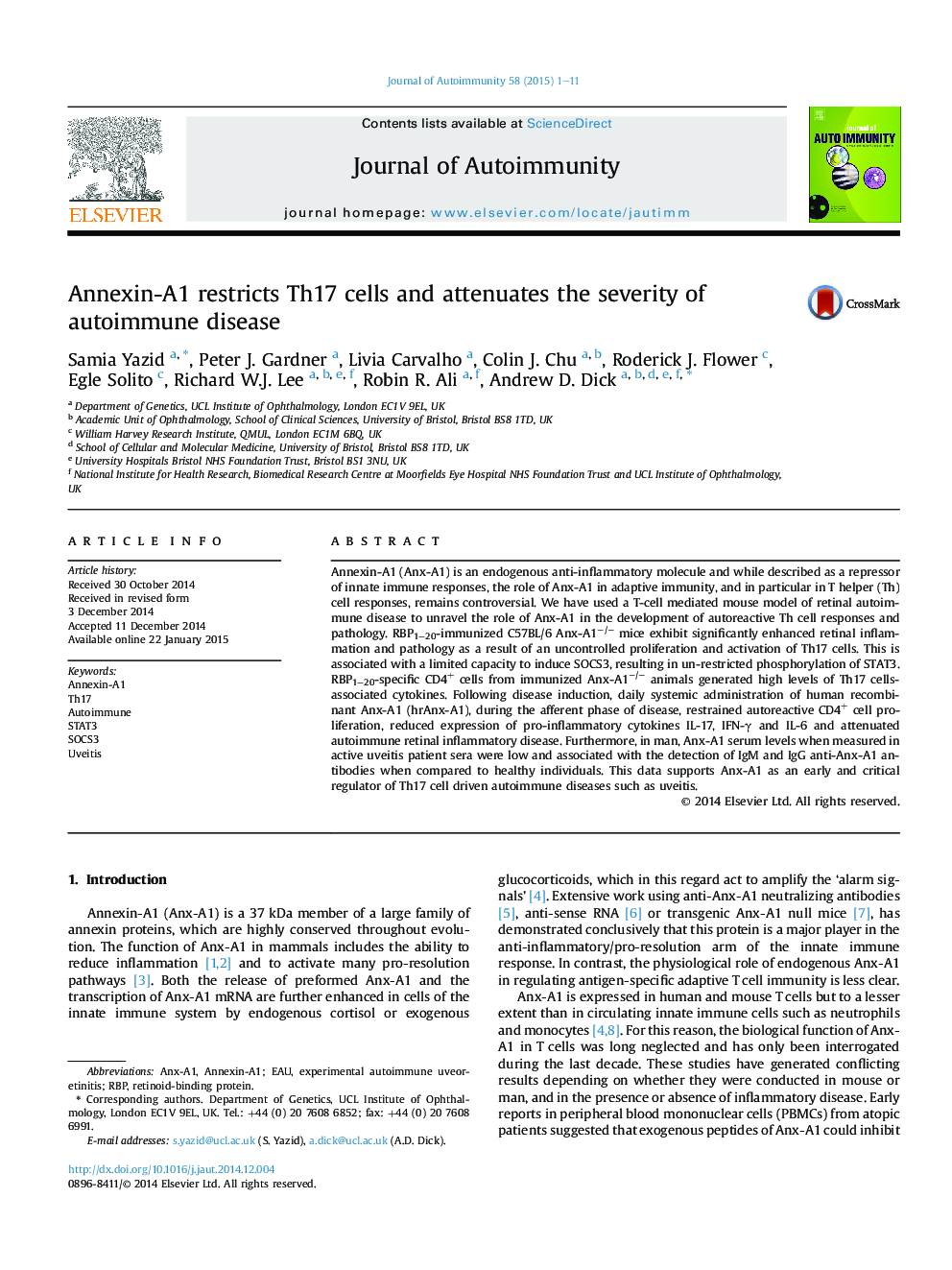| Article ID | Journal | Published Year | Pages | File Type |
|---|---|---|---|---|
| 3367731 | Journal of Autoimmunity | 2015 | 11 Pages |
•Anx-A1 deficiency results in increased autoimmune pathology in mouse.•Anx-A1 deficiency results in proliferation and activation of Th17 cells.•Autoimmune disease severity can be rescued by administration of hrAnx-A1.•Anx-A1 regulates SOCS3/STAT3 signaling to restrain Th17 development.•Anx-A1 deficiency is correlated with active uveitis disease in humans.
Annexin-A1 (Anx-A1) is an endogenous anti-inflammatory molecule and while described as a repressor of innate immune responses, the role of Anx-A1 in adaptive immunity, and in particular in T helper (Th) cell responses, remains controversial. We have used a T-cell mediated mouse model of retinal autoimmune disease to unravel the role of Anx-A1 in the development of autoreactive Th cell responses and pathology. RBP1–20-immunized C57BL/6 Anx-A1−/− mice exhibit significantly enhanced retinal inflammation and pathology as a result of an uncontrolled proliferation and activation of Th17 cells. This is associated with a limited capacity to induce SOCS3, resulting in un-restricted phosphorylation of STAT3. RBP1–20-specific CD4+ cells from immunized Anx-A1−/− animals generated high levels of Th17 cells-associated cytokines. Following disease induction, daily systemic administration of human recombinant Anx-A1 (hrAnx-A1), during the afferent phase of disease, restrained autoreactive CD4+ cell proliferation, reduced expression of pro-inflammatory cytokines IL-17, IFN-γ and IL-6 and attenuated autoimmune retinal inflammatory disease. Furthermore, in man, Anx-A1 serum levels when measured in active uveitis patient sera were low and associated with the detection of IgM and IgG anti-Anx-A1 antibodies when compared to healthy individuals. This data supports Anx-A1 as an early and critical regulator of Th17 cell driven autoimmune diseases such as uveitis.
